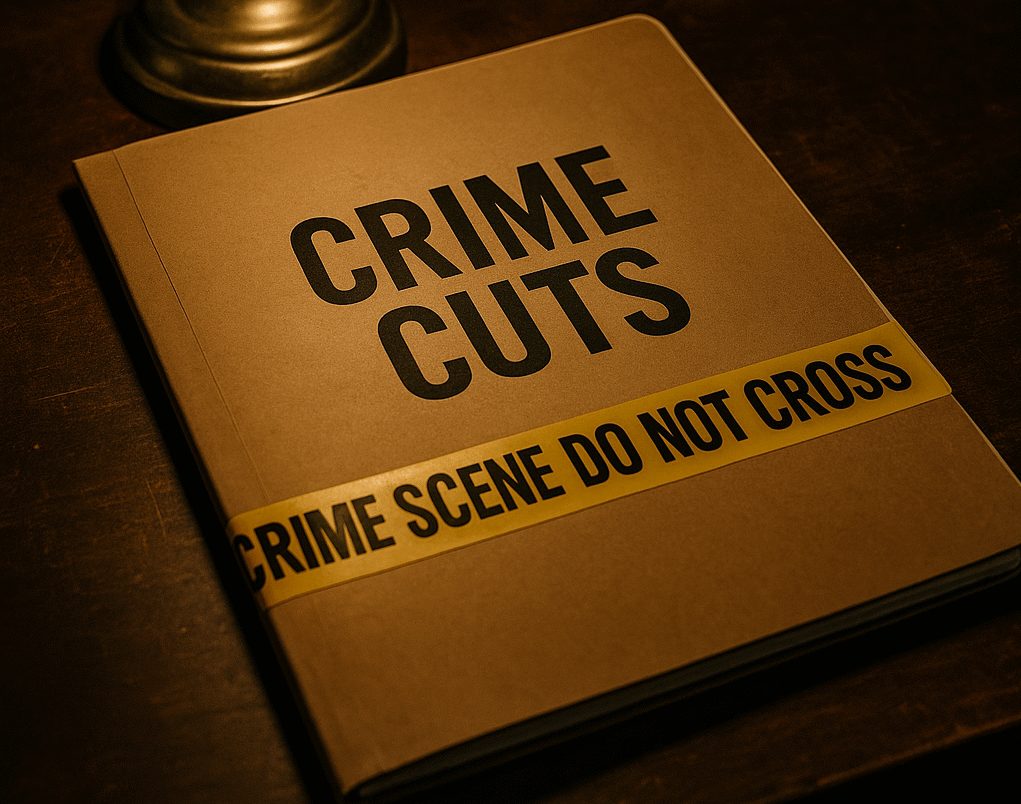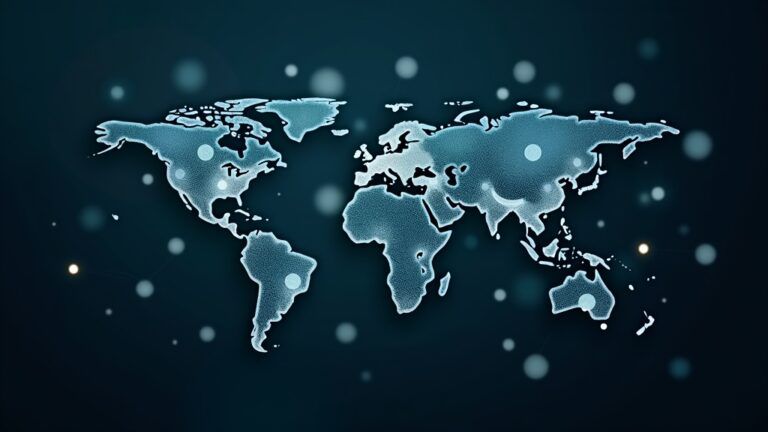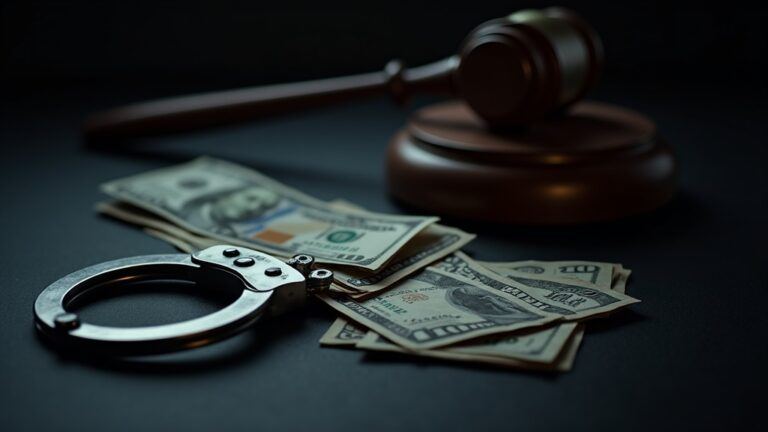Forensic science is at the heart of many successful crime investigations. It blends science, technology, and some solid detective work to help uncover the truth behind crimes. From analyzing tiny fibers at a scene to pulling data from digital devices, forensic techniques are essential in helping law enforcement close cases and courts reach fair decisions. The role of Forensic Science In Solving Crime cannot be overstated. Forensic Science In Solving Crime is crucial for justice.

Table of Contents
What Is Forensic Science?
Forensic science is basically using different branches of science to help figure out what happened during a crime. It covers a large range of specialties, stretching from biology to chemistry and even psychology. Consider forensic science the behind-the-scenes powerhouse that collects, keeps, and studies clues before piecing everything together for investigators, detectives, and the courtroom.
The importance of Forensic Science In Solving Crime cannot be underestimated. It not only aids in solving ongoing cases but also contributes to the prevention of future crimes by identifying patterns and trends.
In conclusion, Forensic Science In Solving Crime is an essential factor in achieving justice. Its methodologies and techniques shed light on the darkest corners of criminal activity.
This field mixes together tools and insights from areas like physics, chemistry, medicine, and technology. The main goal is to present solid, clear, and credible evidence that can help solve crimes and support fair justice for everyone involved.
Main Areas of Forensic Science Used in Investigations
Forensic Science In Solving Crime
Forensic Science In Solving Crime plays a vital role in modern investigations. Law enforcement relies heavily on the insights provided by forensic experts. The integration of Forensic Science In Solving Crime ensures that each piece of evidence is meticulously analyzed and considered in the pursuit of justice.
Forensic science covers a spectrum of specialties, each with its own tools and priorities. Let’s look at some common areas people often run into:
- DNA Analysis: Uses biological material such as blood, hair, or skin cells to link suspects to crime scenes or victims.
- Fingerprint Analysis: Compares prints from crime scenes to established databases, such as AFIS, to identify people involved.
- Ballistics: Studies firearms and ammunition, tracing bullets and gunshot residue to specific weapons.
- Toxicology: Examines drugs, alcohol, and poisons in blood or tissue samples.
- Forensic Pathology: Medical exams (autopsies) to determine how and why someone died.
- Digital Forensics: Gets into data from computers, phones, or cloud accounts to recover evidence—even things that were deleted.
- Trace Evidence: Looks at hair, fibers, paint, glass, and other tiny items left behind at crime scenes.
- Document Examination: Studies handwriting, signatures, and checks documents for forgery or authenticity.
- Forensic Entomology: Uses bugs found on remains to estimate time since death.
- Forensic Anthropology & Odontology: Studies skeletons or teeth when trying to put a name to unknown victims.
Each specialty brings unique insights that give a boost to investigations and help law enforcement get closer to the truth.
Step-by-Step: How Forensic Science Solves Crimes
Solving a crime with forensics is pretty organized, and every step counts for making sure the evidence holds up in court. Here’s the general flow:
- Securing the Scene: First responders make sure nothing gets disturbed so evidence stays reliable.
- Evidence Collection & Documentation: Investigators collect samples, take notes, and photograph the scene. Every piece gets labeled to keep track of its origin.
- Chain of Custody Begins: Every time evidence changes hands, it’s recorded and tracked to show it hasn’t been tampered with.
- Lab Analysis: Trained specialists run tests on collected evidence. This stage often gets reviewed by others to double-check findings.
- Reports & Court Testimony: Forensic experts spell out their results and, if needed, explain technical details to judges and juries, making sure everyone understands the evidence.
Keeping a clear record and setting high standards at every step are vital for reaching just outcomes.
Why Forensic Science Matters in Court
Forensic evidence makes a big difference in figuring out guilt or innocence. Scientific tests are used to back up or question witness statements, shape timelines, and bring motivations to light. Forensics can either support a side in court or challenge questionable claims.
Not all evidence makes it into court, though. Only certain kinds—those that meet strict standards like the Daubert or Frye rules—are allowed. These tough guidelines block unreliable methods or exaggerated science from swaying a case unfairly.
How Forensics Has Helped Crack Some Famous Cases
Ultimately, Forensic Science In Solving Crime connects the dots between evidence and justice, ensuring that every piece of information is utilized effectively.
Some of the most talked-about criminal cases got solved—or sometimes stayed unresolved—largely thanks to forensics:
- DNA Exoneration: Efforts like the Innocence Project have freed people from prison when DNA didn’t match old evidence.
- Genetic Genealogy: Cold cases, such as the Golden State Killer, were solved by matching DNA at the crime scene to relatives in public genealogy sites.
- Rechecking Old Samples: New forensic methods solve crimes that have stumped investigators for decades.
- Catching Repeat Offenders: Forensics can link different crimes even if they happened years apart or in different places.
- Spotting Staged Scenes: Careful analysis sometimes shows when someone faked a scene to cover up what really happened.
Limitations and Controversies in Forensic Work
Even though forensic science is a strong tool, it isn’t perfect. Here’s a look at some common barriers:
- Human Error or Bias: Mistakes can occur in labs or during analysis, especially with heavy workloads or speedy timelines.
- Confidence in Results: Not every branch, like bite mark analysis, has stood up to scientific scrutiny.
- Evidence Backlogs: Busy labs sometimes mean justice gets delayed because tests take a long time.
- Tunnel Vision: There’s a risk that evidence might be twisted to fit a theory instead of looked at objectively.
- The CSI Effect: TV shows have raised unrealistic expectations; juries now look for next-level cool, clear evidence in every case, which isn’t realistic.
DNA: The Most Reliable Forensic Evidence?
DNA analysis is often called the gold standard of forensic evidence. Just a single hair, a smear of blood, or a bit of skin cells can offer a DNA profile unique to an individual (unless you’re identical twins). DNA helps investigators confirm or rule out suspects, identify unknown victims, and iron out family relationships.
- Sample Collection: Investigators might collect saliva swabs, bone fragments, skin cells—whatever could have DNA.
- STR Profiling: Short Tandem Repeat tests spot unique patterns in our genetic material.
- CODIS: Agencies use the Combined DNA Index System to check DNA profiles against known offenders and other cases.
Still, DNA tests aren’t always flawless; evidence can get contaminated, degrade, or only offer partial profiles. But when managed with care, DNA is among the strongest tools out there for solving difficult cases.
Digital Forensics: Sifting Through Data for Hidden Clues
Most crimes today leave some kind of digital trail—from smartphone GPS history to deleted files on laptops. Digital forensic specialists pull out, break down, and sometimes even rebuild data that could have been erased or hidden. This work covers:
- Phone call and messaging records
- Social media posts and their metadata
- Location info from GPS and cell towers
- Files stored on the cloud or in encrypted apps
Digital evidence is super helpful for catching people in organized crime, financial scams, trafficking, cybercrimes, and even terrorism. It often fills in the blanks that traditional evidence can’t cover.
Forensic Experts in the Courtroom
Experts in forensic science take on the tricky job of breaking down complex details for non-experts—mainly judges and juries. Their job is to keep things simple, honest, and clear, no matter which side is paying for their services.
- Explaining science in everyday language
- Handling questions from both sides and tough cross-examinations
- Making sure to highlight not just what evidence means, but also its limits
The experience and reputation of a forensic expert help decide how seriously the court takes their testimony, sometimes making or breaking cases.
Cases Where Forensic Evidence Changed the Outcome
- The Golden State Killer: Caught after decades thanks to a blend of DNA analysis and genealogy records.
- Amanda Knox: Raised red flags about possible contamination and the real limits of forensic science.
- Ted Bundy: Prosecutors brought in bite mark evidence—now mostly rejected as science.
- Casey Anthony: Science couldn’t pin down a cause of death, putting doubt on forensic limits.
- BTK Killer: A floppy disk and DNA taken from family closed this case, showing the power of digital and biological evidence combined.
Forensic Science Tech Today and Tomorrow
Forensics is one field that never stays still. Some of today’s next-level cool tech includes:
- AI and machine learning to find patterns, from faces to voices
- 3D scanners that rebuild crime scenes virtually for later study
- Portable field kits so DNA can be checked right at the scene
- Biometric recognition—like facial or voice matching to spot suspects quickly
- Analytical software that helps police with profiling and tracking trends
These tools help officers, scientists, and courts handle evidence in ways that just weren’t possible even a few years ago, making investigations smoother and more thorough.
For an authoritative look into how science intersects with justice, check out the Forensic Sciences section on the Bureau of Justice Statistics website. It explains how disciplines like physics, chemistry, biology, engineering, and computer science are applied to criminal investigations—covering everything from DNA and fingerprint analysis to digital and trace evidence, and even medicolegal death investigations through medical examiners and coroners.
Lessons Learned Through Forensics
Forensic science gives law enforcement and the justice system powerful tools to solve crime, but it also serves as a reminder: ethics, accuracy, and transparency are more important than ever. The most advanced test or coolest software still can’t tell the whole story. That’s why it’s crucial for forensic specialists to work methodically, stay impartial, and be open about what their evidence can do—and what it can’t address.
With every new technique and as more transparency is embraced, forensic science keeps helping build trust in our justice system and supports fair outcomes for everyone. And as technology marches forward, who knows which mystery might get cracked next?
Contact Us:
If you need to contact us for any reason, please feel free to do so here!






